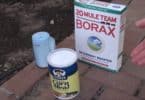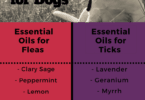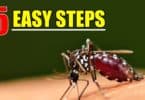Spring has sprung and battle lines again are being drawn in that seemingly ageless war of Gardener vs.Gopher. And, as the following list of weapons reveal, while technology favors the gardener, don’t expect an easy victory. Fumigants, repellents, and poisons are some choices while suffocating, trapping, and drowning others. In the case of Gardener vs. Gopher, frustration seems, indeed, to be the mother of desperation.
Barricade
If you don’t feel like going right to the offensive, barricading could be your first line of defense. This is assuming you’re protecting a relatively small garden because it does mean digging a protective trench around it and lining it with ¼ to ½-inch galvanized mesh or chicken wire. The trench should be at least two-feet deep and extend above the ground another 12 inches. This is perhaps the least effective weapon in the gopher wars and if you’re choosing it simply because the kids think your nemesis is cute and they’ve already named it, you probably should move on to another choice.
Flooding
This method is, arguably, just a notch up in effectiveness and it’s almost as labor intensive. But, it is fairly simple in theory. Find the most freshly constructed gopher mound, unplug it (gophers tend to plug their entryways with dirt), shove in a garden hose and turn on the water. The standard suggested time limit is at least 15 minutes, during which time you keep an eye on nearby mounds and wait for the gopher to escape his flooded quarters. The next step is up to you but it’s a bit like that whack-a-gopher arcade game. What you whack it with and how hard you whack it is up to you.
Fumigants
Although fumigants are often suggested as a pest control measure, it seems, for all practical purposes, to be pointless since the ones most often used for gopher control are federally classified as “restricted use pesticides.” This means persons using them need training beyond simply reading the label to insure safe usage, and that limits their use by most homeowners. Fumigants also are considered relatively ineffective since their slow moving gases seem to be easily avoided by gophers that quickly seal off their tunnels when they smell them. However commercial pest control companies commonly use fumigants so keep the Yellow Pages handy.
Poison
Strychnine-treated grain is the most often used for gopher control and finding where and how to place it is the key to its success. It should be placed in the main burrow/tunnel and not any of the many lateral tunnels of the gopher labyrinth. Using a probe (a sturdy stick will do if the ground is soft enough), start probing some eight to 12 inches from the plug side of a fresh mound. When there’s a sudden drop in the probe, you’ve probably found the burrow. Enlarge the hole you started with the probe, drop in the poisoned grain, fill in the hole and wait. If no more gopher, you win: If more gopher, try again.
Trapping
There are several types and brands of gopher traps on the market and this method of control is considered the most effective. Again, success is in finding of the main tunnel and correct placement of the traps. They should be set in pairs and facing opposite directions so as to catch the little critter regardless of the direction he approaches. A trowel or something like a trowel might be necessary in order to enlarge the tunnel enough to place the traps. To bait or not to bait depends on the type of trap used.
Conclusion
Explosive devices that kill by concussion, vibrating stakes, pinwheels and plants such as such as garlic, gopher purge and castor bean are some of the more bizarre weapons in the war on gophers, and some swear that chewing gum and laxatives will spell their demise. Still, the most often used controls by the average home gardener are trapping and poison bait. And, everyone agrees that patience and determination are required in a war that should be declared as soon as the furry adversary is spotted.
<>







